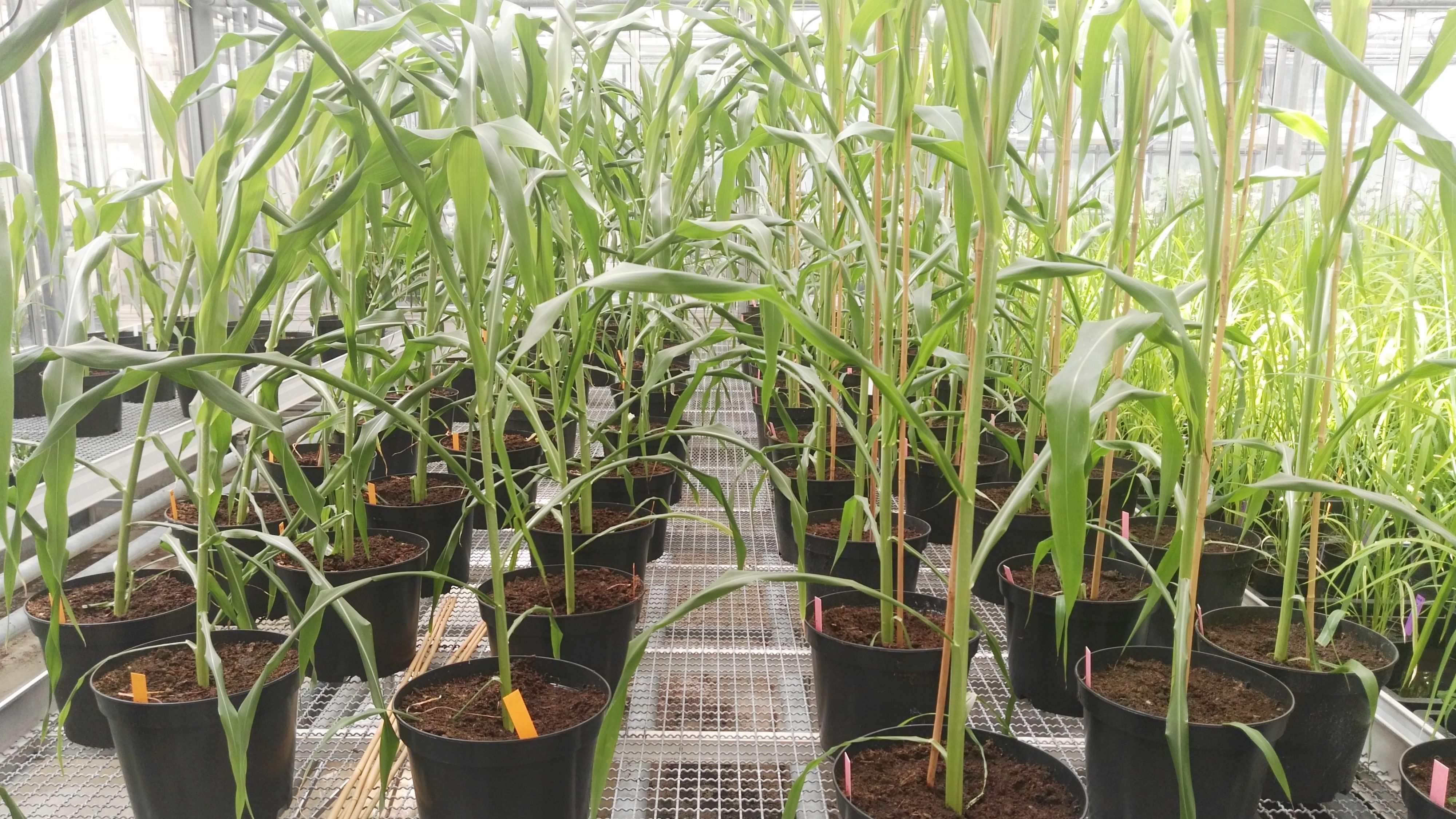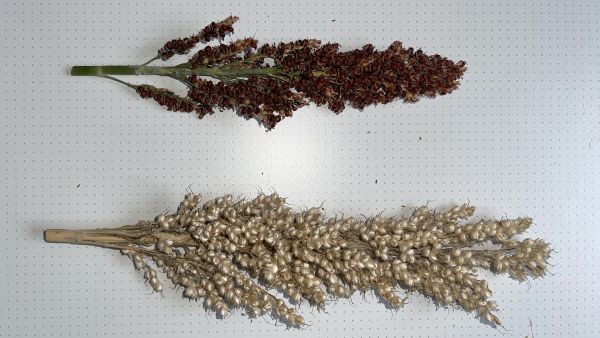
Sorghum millet is seen as the crop plant of the future: It builds up a particularly high amount of biomass and thrives in harsh conditions. Certain varieties even produce more sugar on salty soils. In an in-depth investigation of this salt-stress-induced sugar accumulation conducted by an international team including scientists from Karlsruhe Institute of Technology (KIT), it was found that the SWEET13 gene switch is responsible for directing sugar into the grains. Targeted breeding allows the introgression of SWEET13 into different varieties of sorghum millet so that it contributes to the food security of humankind. The researchers reported on their findings in the Scientific Reports journal (DOI: 10.1038/s41598-025-90432-2 ).
The world's population is growing, and with it, the demand for food, primary products, and energy. Thus, crop productivity, especially that of cereals, needs to increase significantly. The impact of climate change renders it progressively difficult to meet this goal. Besides heat and drought, soil salinity puts crop plants under stress, as more and more fertile grounds are becoming salty because of the rising sea levels. Crop plants, which both have a high amount of biomass and thrive well on saline soils, might mitigate this problem.
The Molecular Cell Biology Division workgroup, headed by Professor Peter Nick at KIT's Joseph Gottlieb Kölreuter Institute for Plant Sciences (JKIP), has been working for some years on sorghum millet, which belongs to the millet species in the sweet grass family. The sorghum varieties rich in sugar are called sweet sorghum. Sorghum millet is one of the crops with a particularly efficient photosynthesis process, which have a higher capacity to sequester carbon dioxide (CO2) and build up more biomass than other plants. Previous research of Syrian scientist Dr. Adnan Kanbar at KIT resulted in the development of a new sweet sorghum variety that accumulates a particular large amount of sugar and is well suited for producing biogas and biofuels and for producing new polymers.
Certain Varieties Produce More Sugar on Saline Soils
Further research shows that sorghum millet, an ancient crop plant from Sudan, thrives even in harsh conditions. "Certain sorghum millet varieties not only cope well in a saline environment, but react to increased salinity with the production of even more sugar," says Peter Nick. "Some of these varieties store the sugar in the stem, which makes them a candidate for energetic use, i.e. the production of biofuels. Other varieties store the sugar in the seeds, making them a valuable contribution to human nutrition."

Top: "Della" variety that translocates fewer resources into the seedsdue to a less active SWEET13 gene variant.
Bottom: Syrian landrace "Razinieh," which has a salt-activated SWEET13 allele and therefore
stores more carbohydrates in its seeds. (Photo: KIT)
SWEET13 Gene Switch Directs Sucrose towards the Grains
This salt stress-induced sugar accumulation and the different ways to store sugar in the plant was investigated by a group of researchers led by Dr. Eman Abuslima from Egypt, who completed her doctorate at the Molecular Cell Biology Division workgroup of KIT's JKIP institute. They discovered that the SWEET13 gene is responsible for sugar transport. "SWEET13 works like a switch: It determines that the sucrose formed by photosynthesis is directed into the plant's grains," explains Abuslima. The researchers found a particularly active type of SWEET13 in Razinieh, an ancient sorghum millet variety from Syria. This gene switch can be introgressed into other varieties by breeding. A polymerase chain reaction (PCR) helps to identify the breeding results with the correct variant as early as at the seedling stage. "This molecular knowledge can contribute to securing human nutrition in regions affected by soil salinization," says Peter Nick. The Nile Delta, Bangladesh, but also southern parts of Italy are already struggling with the salt stress issue.
The scientists, among them researchers from KIT's Institute of Applied Geosciences, Martin-Luther-University of Halle-Wittenberg, and research institutions from Egypt, Syria, and the USA, reported on their findings in the Scientific Reports journal. (or)
Original publication
Eman Abuslima, Adnan Kanbar, Ahmed Ismail, Manish L. Raorane, Elisabeth Eiche, Islam El-Sharkawy, Björn H. Junker, Michael Riemann & Peter Nick: Salt stress-induced remodeling of sugar transport: a role for promoter alleles of SWEET13. Scientific Reports, 2025. (DOI: https://www.nature.com/articles/s41598-025-90432-2 )
See also Press Release "Sweet Sorghum: Sweet Promise for the Environment"
Being "The Research University in the Helmholtz Association", KIT creates and imparts knowledge for the society and the environment. It is the objective to make significant contributions to the global challenges in the fields of energy, mobility, and information. For this, about 10,000 employees cooperate in a broad range of disciplines in natural sciences, engineering sciences, economics, and the humanities and social sciences. KIT prepares its 22,800 students for responsible tasks in society, industry, and science by offering research-based study programs. Innovation efforts at KIT build a bridge between important scientific findings and their application for the benefit of society, economic prosperity, and the preservation of our natural basis of life. KIT is one of the German universities of excellence.






